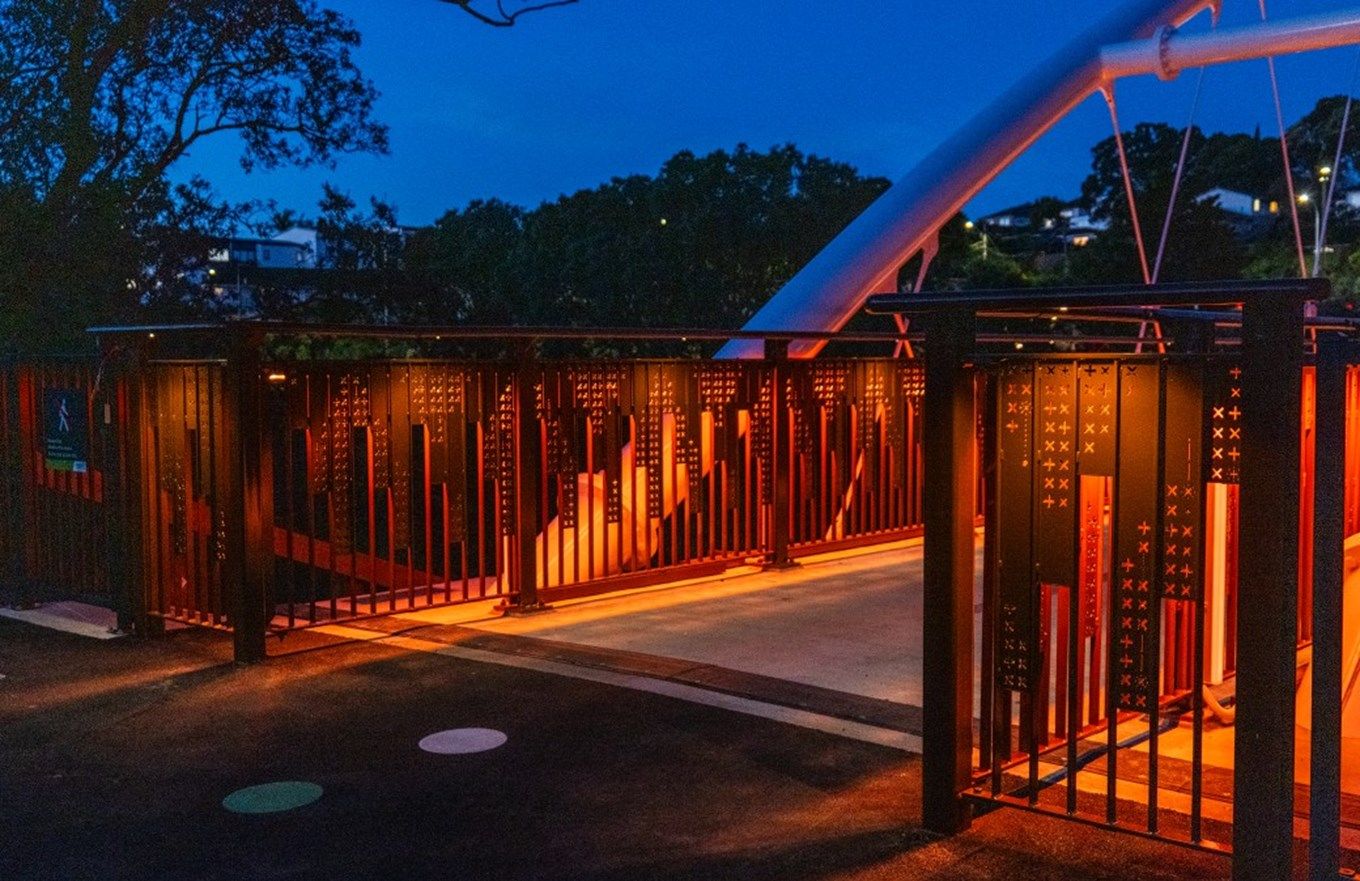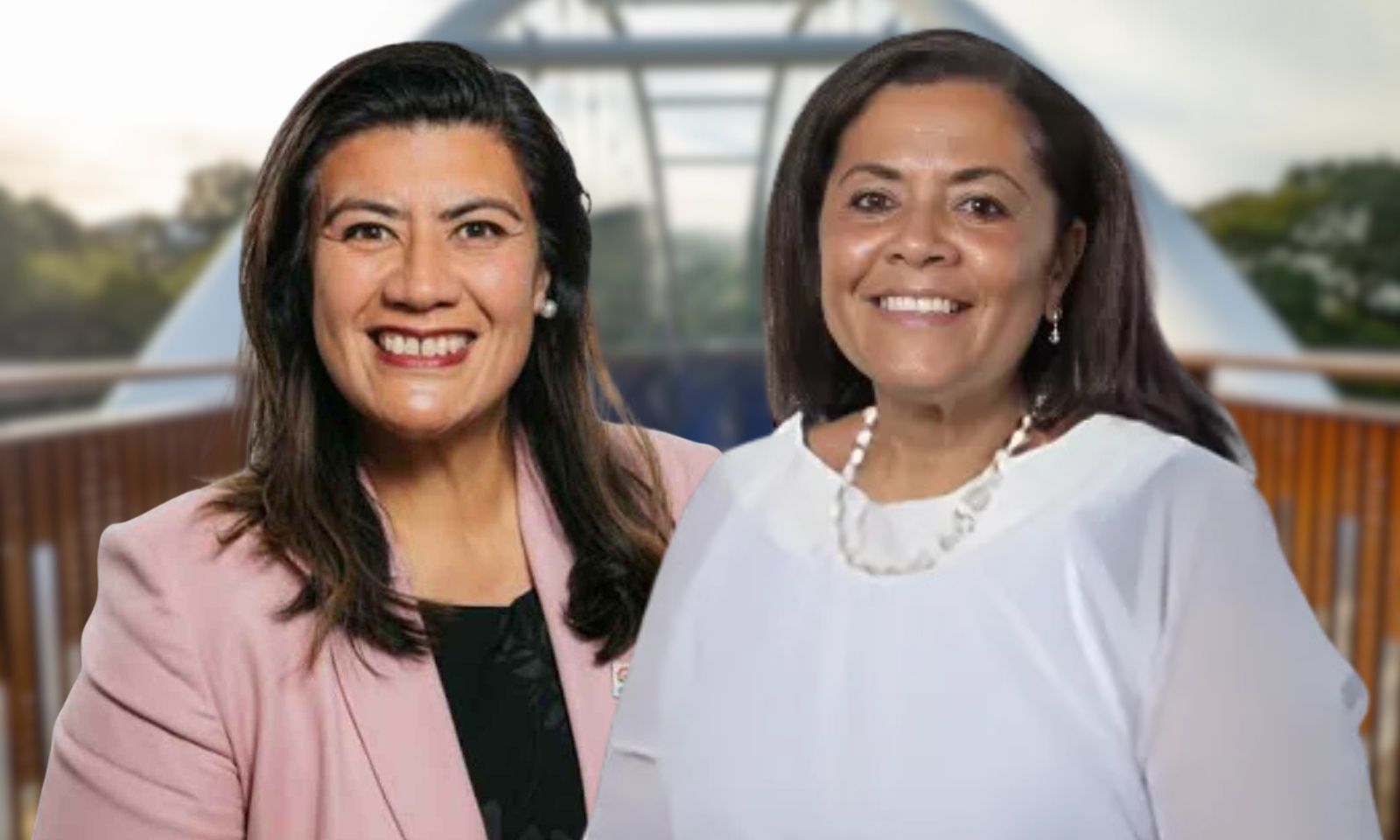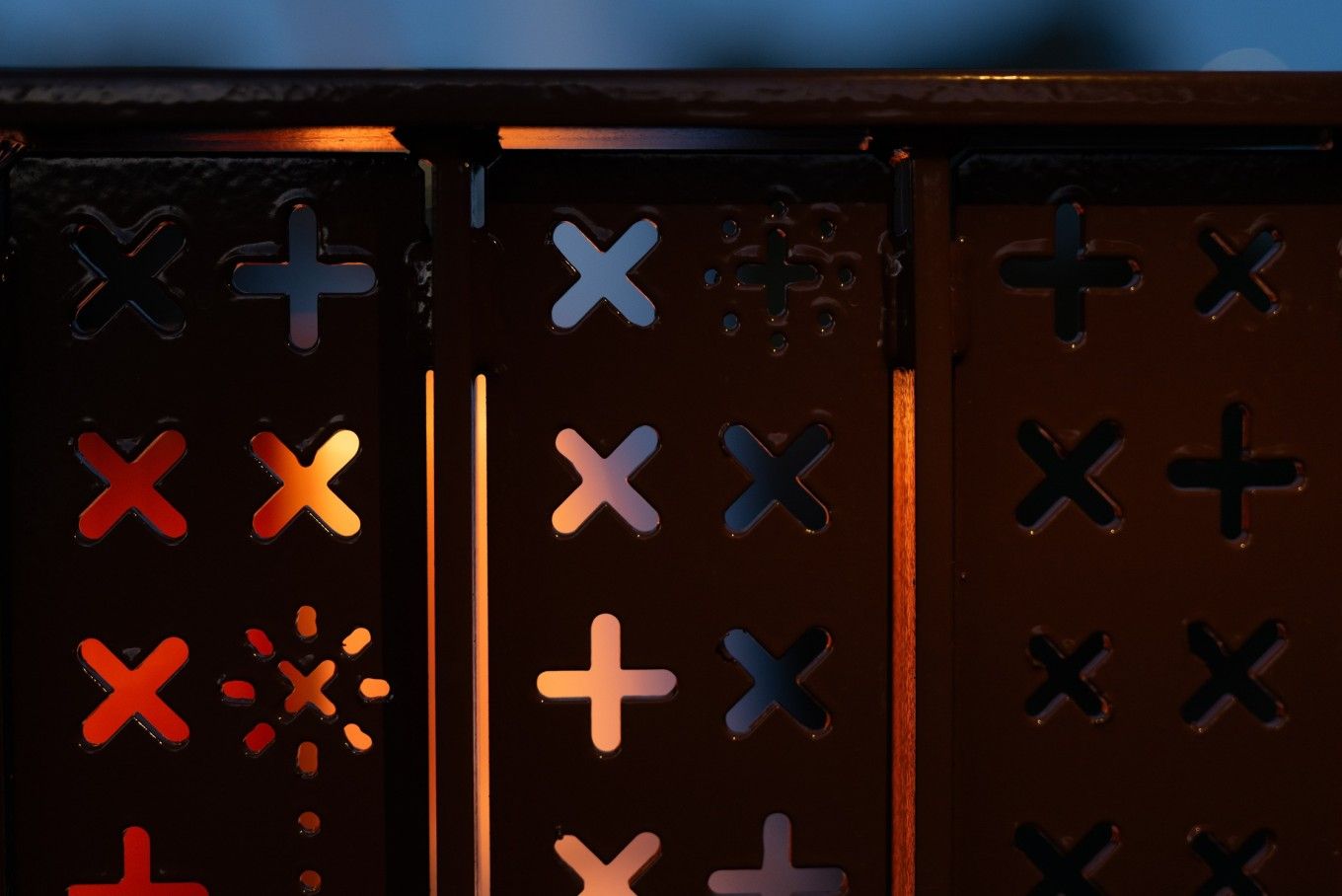

Te Kōpua o Hiku reconnects the Panmure Basin, blending culture, creativity and community connection.
Photo/Auckland Council
New bridge opens, blending culture, innovation and links
The pedestrian and cycling bridge features art, light, and designs led by local iwi.



Niuean designers make historic debut at New Zealand Fashion Week

Siua Ikale’o: A Tongan talent’s rise to stardom in Chief of War series

Not your average Joe: One Cook Islander's inspiring journey to the Strongman Games


South Auckland leaders decry ‘crumbs’ from Mayor's Fix It Fund

Niuean designers make historic debut at New Zealand Fashion Week

Siua Ikale’o: A Tongan talent’s rise to stardom in Chief of War series

Not your average Joe: One Cook Islander's inspiring journey to the Strongman Games
After more than a year without a pedestrian bridge, the Panmure Basin has a fresh new look and is open to the community.
Locals gathered at dawn on 19 July to celebrate the opening of Te Kōpua o Hiku, a striking new walking and cycling connection that links both sides of the lagoon through art, culture, and consideration for the environment.
The 60-metre bridge replaces the original Jubilee Bridge, which was closed in July 2023 after engineers deemed it unsafe. The long-awaited replacement restores a vital route for walking and cycling around the basin and introduces interactive public art that is powered by the wind.
Delivered under budget and ahead of schedule, Te Kōpua o Hiku reflects a collaboration between Ngāti Pāoa, the Maungakiekie-Tāmaki Local Board, Auckland Council engineers, and the Public Art team. The project integrates cultural storytelling, functional design, and data-responsive lighting to create a new landmark.
'It adds a little bit of heart to the community'
Maria Meredith, chair of the Maungakiekie-Tāmaki Local Board, says the project was one of five across Auckland that the mayor praised.
“The overall bridge... was one of five projects across the city that the Mayor of Auckland was really happy with,” she says. “Why? Because it was delivered differently and it came under cost.”
The bridge was fabricated off-site, assembled in Pakuranga and then lifted into place with a 600-tonne crane in December 2024. Meredith says the successful outcome was due to collaboration across various council departments.
“It wasn't just Auckland Council. There was Healthy Waters, Watercare, Vector, different people all working... to get the area ready for the installation of the new bridge.”

As the wind blows, the bridge lights respond - transforming Te Kōpua o Hiku into a dynamic night-time artwork. Photo/Auckland Council
On opening day, the bridge quickly became a symbol of connection for the community.
“I met two people that were in their 90s... one lady was 90, the other one was 90... they wanted to be the eldest person to cross the bridge. I met somebody who wanted to be first on his e-bike,” she says.
“The new Panmure Basin Te Kōpua o Hiku bridge really adds a little bit of heart to the community.”
A bridge built for wellbeing and everyday use
Josephine Bartley, Councillor of the Maungakiekie-Tāmaki ward, says the bridge supports community wellbeing and everyday travel needs.
“The bridge plays a major part in people's well-being because so many people use it for exercise and they do the loop,” she says. “So many people come, not just the locals, but people come from around Auckland to exercise around the basin.”

At night, the bridge glows with moving colour, shaped by the natural elements. Photo/Auckland Council
The bridge is an excellent example of how public art and infrastructure can work together, blending beauty with functionality.
Bartley also highlighted the environmental benefits.
“It's not just a beautiful bridge, but it's got functional purpose as well for people's daily lives.
“That particular area... we have one of the only shag colonies left in the suburbs. So it's good that it's finally finished, no more disruption for the birds there.”
She says the bridge’s design came together through strategic thinking that allowed for more funding.

With support from Josephine Bartley and Maria Meredith, the new bridge brings new life to the Panmure Basin. Photo/Auckland Council
“In making the bridge a public art installation, we were able to use public art money to go towards the cost of the new bridge. So I think it's a very clever way to have public art in a community, but also for a functioning community.”
Where art meets ancestry
Ngāti Pāoa named the bridge Te Kōpua o Hiku, referring to the deep pool beneath it, which has long been associated with the taniwha Moko-ika-hiku-waru.
Meredith says the iwi has always referred to the area by this name.
“That particular area for many centuries has always been known as Te Kōpua o Hiku, which is in reference to the taniwha... The name has never changed,” she says. “It was kind of beautiful to attach that name to the bridge when it was completed.”

Janine Williams and Shannon Novak infused Te Kōpua o Hiku with Māori and Croatian symbolism, creating a bicultural design of protection and belonging. Photo/Auckland Council
The bridge includes 30 tukutuku-like panels that respond to wind and light. Real-time weather data activates kinetic lighting from dusk until 10pm.
“As the wind blows, it actually influences and changes the colours on the bridge,” Meredith says. “It actively responds to the environment... During the day it’s an awesome bridge to walk over, and by the evening... it changes colours.”
The design was created by artists Janine Williams (Ngāti Pāoa) and Shannon Novak (Tararā). Ngāti Pāoa also participated in the opening ceremony.
“They helped to celebrate and mark the occasion when we had a dawn karakia,” Meredith says. “They got to share a little bit of history about the area and the rationale behind the naming.”
A regional taonga for future generations
Auckland Council invested $1.2 million over nine years into the public art component of the bridge as part of a wider commitment to integrate culture and creativity into infrastructure.
The project represents the fourth major artwork by the Public Art team that uses real-time environmental data, joining other installations like Te Ara i Whiti (Lightpath), Waimahara in Myers Park, and Te Hokinga Mahara in Warkworth.
Around 430 native plants have been added to the site, and a new 380m² pathway invites further community connection. The bridge is designed to last 100 years, with the artwork maintained separately for a decade.
Meredith says the structure now serves not only Panmure, but also visitors from across the region.
“This particular asset... will serve the local area as well as the wider region and any international visitors.”
- LDR is local body journalism co-funded by RNZ and NZ On Air.
